In my previous post, I introduced you to the Petersburg Granite, as it is exposed south of Belle Isle, at the falls of the James River in Richmond, Virginia. I mentioned that it was fractured, and I’d like to take a closer look at those fractures today.
The geologically-imparted fractures were exploited by human granite quarriers, and in some parts of the river bed, you can see the holes they drilled to break out big slabs of the rock. Some of these block-defining perforations exploited pre-existing fractures.
This is also evident on the north side of Belle Isle itself, where there are several large abandoned quarries now mainly utilized as a rockclimbing locale. There are two dominant fracture sets in the area: one which parallels the schlieren (magmatic fabric), striking NNE; and a second which strikes ENE.
The meaning of these fractures are one of the problems Chuck Bailey (my host at Belle Isle) and his students have been considering. Under Chuck’s tutelage, James McCulla examined these fractures and reported his findings at the NE/SE GSA section meeting in Baltimore last March.
One of the first things Chuck showed me when we got to Belle Isle is some offset schlieren, like these:
Let’s annotate those up, so you can orient yourself:
So clearly, that looks like a right-lateral offset, right? Of course, it could just be an apparent right-lateral offset, as perhaps the inclined schlieren have been offset in a vertical sense, then exposed by erosion on the same horizontal section. We need to determine the true offset direction. If we look at a vertical exposure of the fracture surface itself, will slickensides back that up? Here’s one…
Yep, the slicks are very gently plunging (close to horizontal) and agree with the right-lateral offset we thought we saw in the horizontal exposures in the earlier photos. These are in fact true right-lateral offsets. Chuck is currently dating some muscovite that appears on these surfaces as a method of constraining the timing of deformation.
The other fracture set (NNE-trending, parallel to the schlieren) shows very little in the way of telling fracture-surface anatomy. There may be some weakly-developed steps facing to the upper left, but these surfaces are neither gouged nor mineralized:
Chuck and James therefore interpret the NNE-trending fractures as extensional fractures and the ENE-trending fractures as faults with small offsets. It is worth noting that the NNE-trending extensional joint set is parallel to extensional faults in the Richmond Basin, a Triassic rift valley 15 km upstream.
So which came first? Here’s a confounding exposure:
Allow me to lighten that up and annotate it for you:
We have two different relationships exposed here, less than a foot apart. At left, we see the NNE-trending joints truncating against the ENE-trending “fault.” At right, we see that the NNE-trending fracture steps to the right as it crosses the ENE-trending fracture. The left example suggests that the ENE “fault” is older, and the NNE joint came later, propagating to the pre-existing discontinuity but no further. The right example suggests that the NNE-trending joint was there first, but was then broken and offset (ever so slightly) in a right-lateral fashion, like the offset schlieren in the photos earlier in this post. In other words, the ENE “fault” is younger.
“Geology isn’t rocket science.” We know what’s going on with rockets — we built those suckers! This, on the other hand, is a bit more complicated!
Anyhow, Chuck and James have been over these rocks like gravy on rice, and they have documented many other instances of cross-cutting relationships. As James’ GSA abstract notes, they found enough exposures to feel confident interpreting the ENE-oriented set to be the older set to have formed as a result of WNW-directed contraction during the Alleghanian Orogeny. The NNE-oriented extensional fractures are the younger set, and are interpreted to have formed during Mesozoic extension accompanying the breakup of Pangea.
Next up, we should take a quick look at the James River itself, and the imprint it has left on this stupendous field site… Stay tuned…



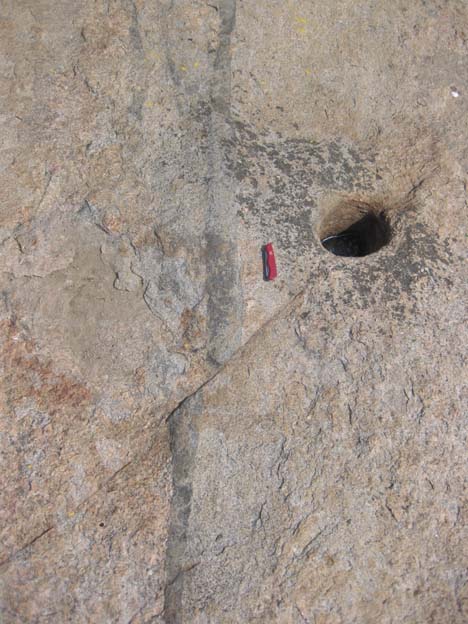
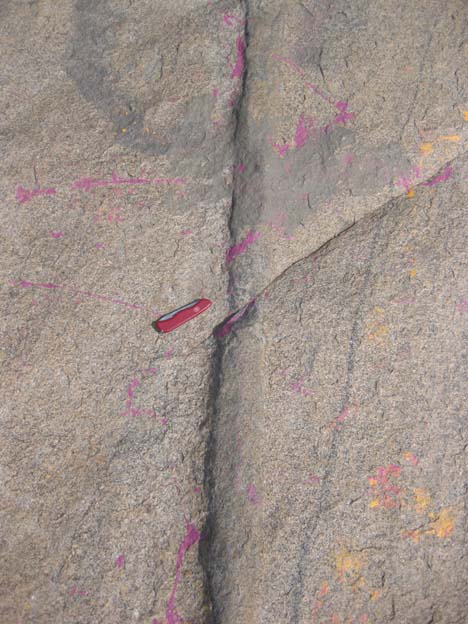
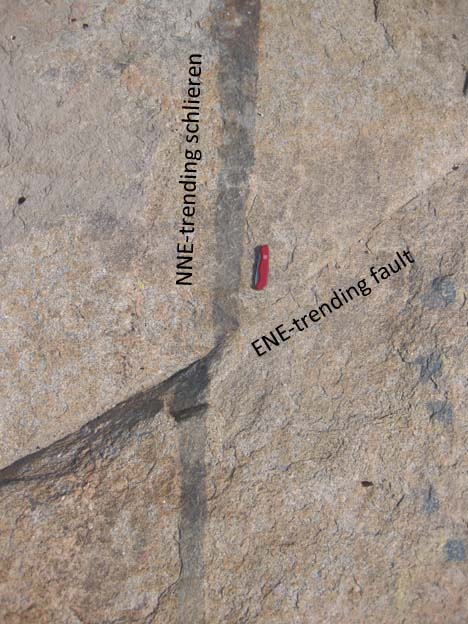
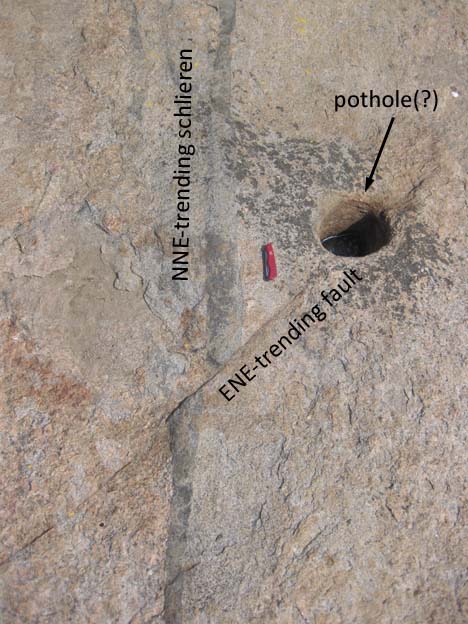
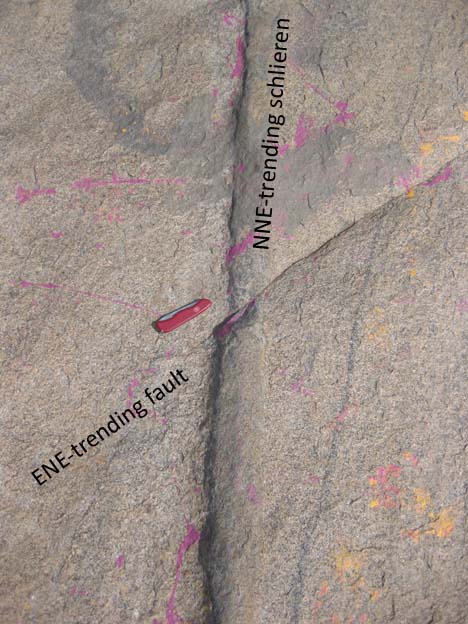
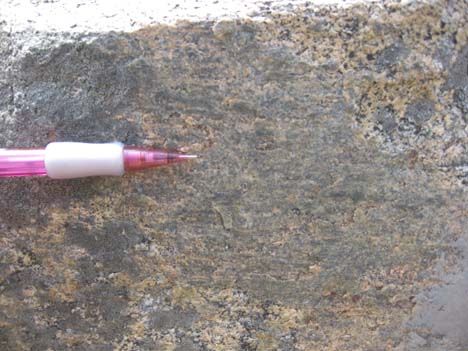
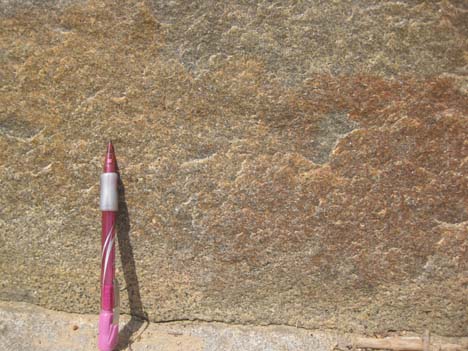
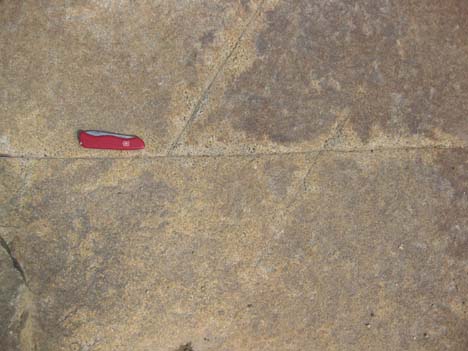

0 thoughts on “Falls of the James II: fractures”